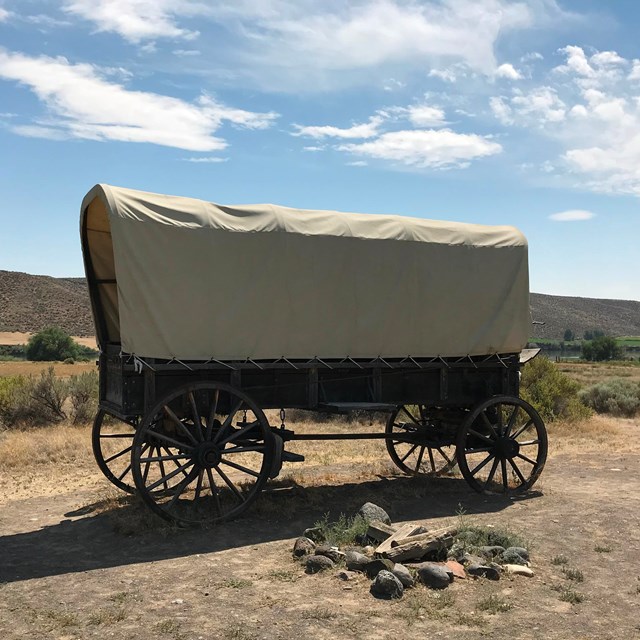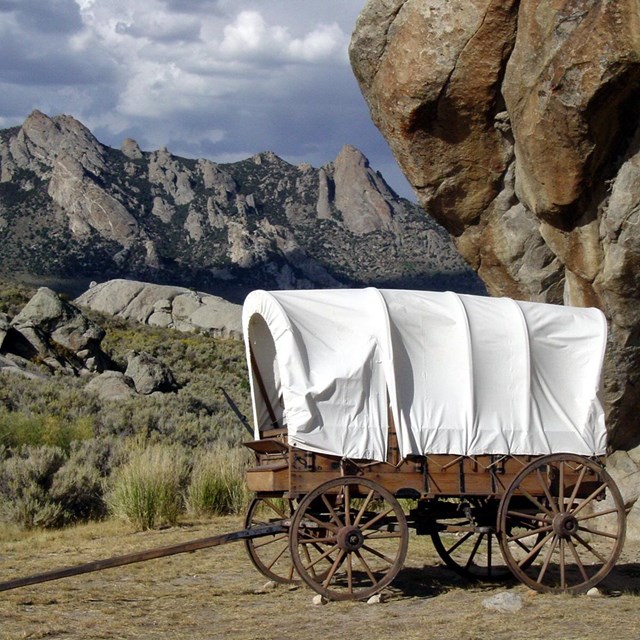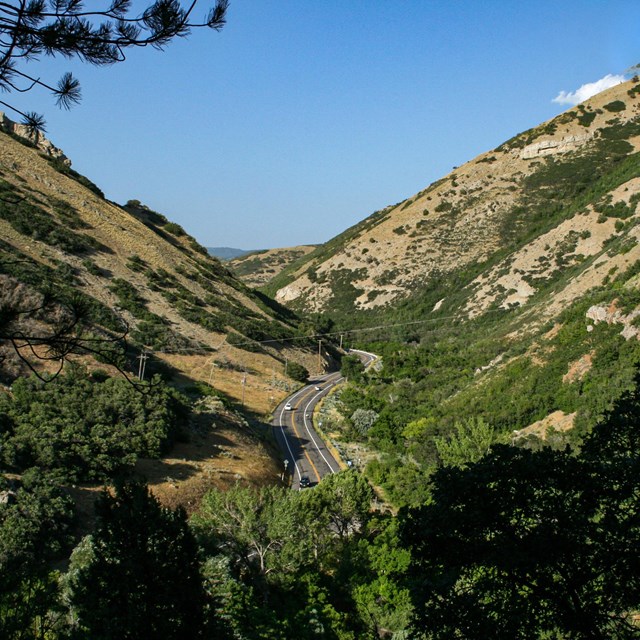Last updated: March 28, 2022
Article
Chapter 1: Race, Slavery, and Freedom - Northern “Unfreedom”
Sweet Freedom's Plains
African Americans on the Overland Trails 1841-1869
By Shirley Ann Wilson Moore, PhD.
For the National Park Service
National Trails Regions 6, 7, & 8
Introduction/Table of Contents
Chapter 1 Sections
- The Early Black Presence
- The Question of Race
- The Evolution of Their Status
- The Contagion of Liberty
- Permanent, Hereditary Chattel: A Snapshot of Antebellum Slavery in the South, Indian Territory, and Border States
- Northern “Unfreedom”
- The Nature of Freedom in the West
- Utah: Slaves and Saints
- No Rights to be Respected
In the North, where economies did not depend on slave labor after the Revolution, legislatures and courts quickly moved to abolish slavery and adopted a policy of gradual emancipation. These actions compelled African Americans to continue in bondage for a specific number of years after the enactment of the state’s abolition laws, or until they or their children reached a specified age.39 In 1800, nearly 37,000 northern blacks, most residing in New York and New Jersey, remained in legal servitude. By 1830, Northern states had virtually abolished slavery, with only 3,568 blacks, most in New Jersey, still in bondage.40
Although Northerners had distaste for chattel slavery and adamantly opposed the expansion of slavery into the western states and territories, most did not want free blacks migrating into Northern cities. This attitude grew out of fear that a flood of cheap black labor would undercut white men’s wages; later, out of poor whites’ perception that they were being drafted to fight on behalf of slaves in the Civil War; and in no small part out of white society’s deep-rooted racial prejudices. To discourage free African Americans from settling in their communities, Northerners passed “black laws” that denied black residents citizenship, suffrage, and property rights. For example, in 1788 Massachusetts barred blacks from residing there longer than two months under penalty of imprisonment, whipping, and hard labor. By 1803, Indiana had banned blacks from testifying in court, from voting, and from serving in the militia. Additionally Indiana levied a $3 tax against all black men. Similarly, Ohio required blacks to post a $500 bond upon entering the state. Even Wisconsin, with the smallest black population of the Old Northwest, passed an anti-black suffrage law. African Americans living under black laws often bore the brunt of white violence and had no recourse to redress their grievances in the courts or by petition. In 1839, Ohio black laws forbade African Americans from petitioning for any reason whatsoever.41
As early as 1827, Cincinnati, Ohio city officials began harshly enforcing state black laws, targeting its 2,258 African American residents (9.4 percent of the total population of 24,148). Citing economic competition from black workers, city fathers implemented a campaign intended to curb black population growth by imposing fines and barring blacks from skilled trades.42 In response, African American residents organized an emigration society, hoping to resettle Cincinnati blacks elsewhere. Canada seemed like a promising place to many black residents. In June 1829, the emigration society elected Thomas Crissup (who had migrated to Cincinnati before 1820) and Israel Lewis (who had settled in the city after escaping slavery with his wife) to travel to Upper Canada and purchase land for an all-black settlement. After meeting with and receiving encouragement from John Colbourne, the Lieutenant Governor of Upper Canada, Crissup and Lewis bought 4,000 acres for $1.50 an acre (the present-day equivalent of $143,000). The land was located in Biddulph Township, along the Au Sable River, less than 20 miles from Lake Huron and the Thames River and eight miles from Lake Erie, in Ontario, Canada. They named the settlement Wilberforce, after British emancipation advocate William Wilberforce. It was intended to be an independent, rural agricultural settlement where farmers would raise cattle and cultivate crops. Before the exodus could begin, however, whites in Cincinnati began a week-long rampage against blacks in the city. The August 1829 outbreak of rioting, in which mobs of rock-throwing, armed whites destroyed black homes, buildings, and businesses, gave more urgency to African Americans’ plans to leave Cincinnati.43
During the riot, between 1,100 and 1,500 blacks fled Cincinnati.44 Some individuals and families, many without the resources to travel far, fled to nearby cities such as Glendale, Hamilton, and Lebanon, but returned once the situation had calmed down. However, a group under the leadership of James C. Brown, a former Kentucky slave who had purchased his freedom, set out for Canada. This group mobilized all its resources to make the 377-mile journey on foot and with wagons through Ohio, across Lake Erie from Sandusky, and on to Canada.45 Between 460 and 2,000 black emigrants made the trip to Canada, but most never settled in Wilberforce, preferring to live in the more established Canadian cities where work was more readily available.
Just one year after the Cincinnati riot, white mobs in Portsmouth, Ohio forced 80 of the town’s 200 black residents to flee. In 1835, another riot in Cincinnati targeted abolitionist officials, abolitionist presses, and black neighborhoods and businesses. In 1846, Ohio whites also objected to the presence of freed slaves who had been emancipated by Senator John Randolph of Roanoke, Virginia. Randolph’s will called for the manumission of his 383 slaves, who were to be resettled in a free state on land purchased with funds from his estate. The executor of the will paid $38,000 to buy 3,200 acres of land in Mercer County, Ohio, for the former slaves, but hostile whites confronted the black newcomers when they attempted to settle in Carthagena (northwest of Columbus). The freedmen were forced to seek shelter with sympathetic white and black families or to move on.46
Race riots also erupted in other northern urban locations, including Detroit, Philadelphia, Utica, and Buffalo. This violence killed and injured hundreds of African Americans and devastated black communities. The New York City draft riot of 1863 was the grimmest of the northern race upheavals. Mobs of angry whites (many of them Irish immigrants who resented that blacks were exempt from the draft and feared black workplace competition), tore through the city, lynching blacks from street-corner lamp poles, murdering others in their homes, and burning down an African American orphanage. Upwards of 100 black people were killed in the four-day rampage.47 The climate of anti-black hostility and violence that prevailed in the early nineteenth century America led to the formation in 1830 of the American Society of Free Persons of Color, which held its first convention in Philadelphia. Outraged by the Cincinnati riot, the Society advocated black colonization to Canada and initiated the black convention movement—a movement that would spread westward with the black overland emigrants.48
By the 1850s, some 200,000 Northern blacks, freed or free-born, lived in a state of “unfreedom.” Thanks to black laws that deprived them of basic civil rights, African Americans were reduced to living as squatters in the states in which many had been born and had resided for generations.49
Next Section - Chapter 1, Race Slavery Freedom: The Nature of Freedom in the West
39 Nash, Race and Revolution, 34.
40 These Northern states abolished slavery: Vermont in 1777, Ohio in 1802, Illinois in 1818, Indiana in 1816, Massachusetts and New Hampshire in 1783, Pennsylvania in 1780, Rhode Island in 1784, Connecticut in 1784 and 1797, New York in 1799 and 1817, and New Jersey in 1804. See Litwack, North of Slavery, 3, 14-15
41 Katz, The Black West, 54-55, 57.
42 Nikki Taylor, “Reconsidering the ‘Forced’ Exodus of 1829: Free Black Emigration from Cincinnati, Ohio, to Wilberforce, Canada,” The Journal of African American History 87 (Summer 2002): 283-302, especially 290-291. For population numbers, see especially 285.
43 Taylor, “Reconsidering the ‘Forced’ Exodus,” 283-302. For the enforcement of black laws and oppression of blacks, see 286-287. For a discussion of immigration plans to Canada before the 1829 race riot and Wilberforce, see 287-293.
44 Taylor, “Reconsidering the ‘Forced’ Exodus,” 291.
45 Ibid., 289, 292.
46 J. Stephen Ellingson, “Understanding the Dialectic of Discourse and Collective Action: Public Debate and Rioting in Antebellum Cincinnati,” The American Journal of Sociology 1, no. 1 (July 1995): 100-144, especially 116-117; Joan E. Cashin, “Black Families in the Old Northwest,” Journal of the Early Republic 15, no. 3, Special Issue on Gender in the Early Republic (Autumn 1995): 449-475, especially 451-452; J. Reuben Sheeler, “The Struggle of the Negro in Ohio for Freedom,” The Journal of Negro History 31, no. 2 (April 1946): 208-226, see especially 212-214. For an account of Randolph’s former slaves and their heirs’ legal battle to reclaim their land, see Frank F. Mathias, “John Randolph’s Freedmen: The Thwarting of a Will,” The Journal of Southern History, 39 no. 2 (May 1973): 263- 272.
47 For a detailed account of anti-black violence in northern cities, see James M. McPherson, The Negro’s Civil War: How American Blacks Felt and Acted During the War for the Union (New York: Ballantine Books, 1991 edition), 69-78; Leonard R. Riforgiato, “Bishop Timon, Buffalo, and the Civil War,” Catholic Historical Review 73, no. 1 (January 1987): 62-80; Michael P. McCarthy, “The Philadelphia Consolidation of 1854: A Reappraisal,” Pennsylvania Magazine of History and Biography 110, no. 4 (October 1986): 531-548, especially 533-535; Carl E. Prince, “The Great ‘Riot Year’: Jacksonian Democracy and Patterns of Violence in 1834,” Journal of the Early Republic 5, no. 1 (Spring 1985): 1-19; and John A. Williams, “The Long Hot Summers of Yesteryear,” The History Teacher 1, no. 3 (March 1968): 9-23.
48 For a summary of the free black convention movement emerging in the aftermath of the Cincinnati riot and the public dialogue among African Americans about emigration to Canada, see Taylor, “Reconsidering the ‘Forced’ Exodus of 1829,” especially 295-297.
49 Litwack, North of Slavery, 15. The term “unfreedom” was used in an influential article by historians Oscar and Mary F. Handlin, “Origins of the Southern Labor System,” The William and Mary Quarterly 7, no. 2 (April 1950): 199-222. See especially 200, 204, 206.




